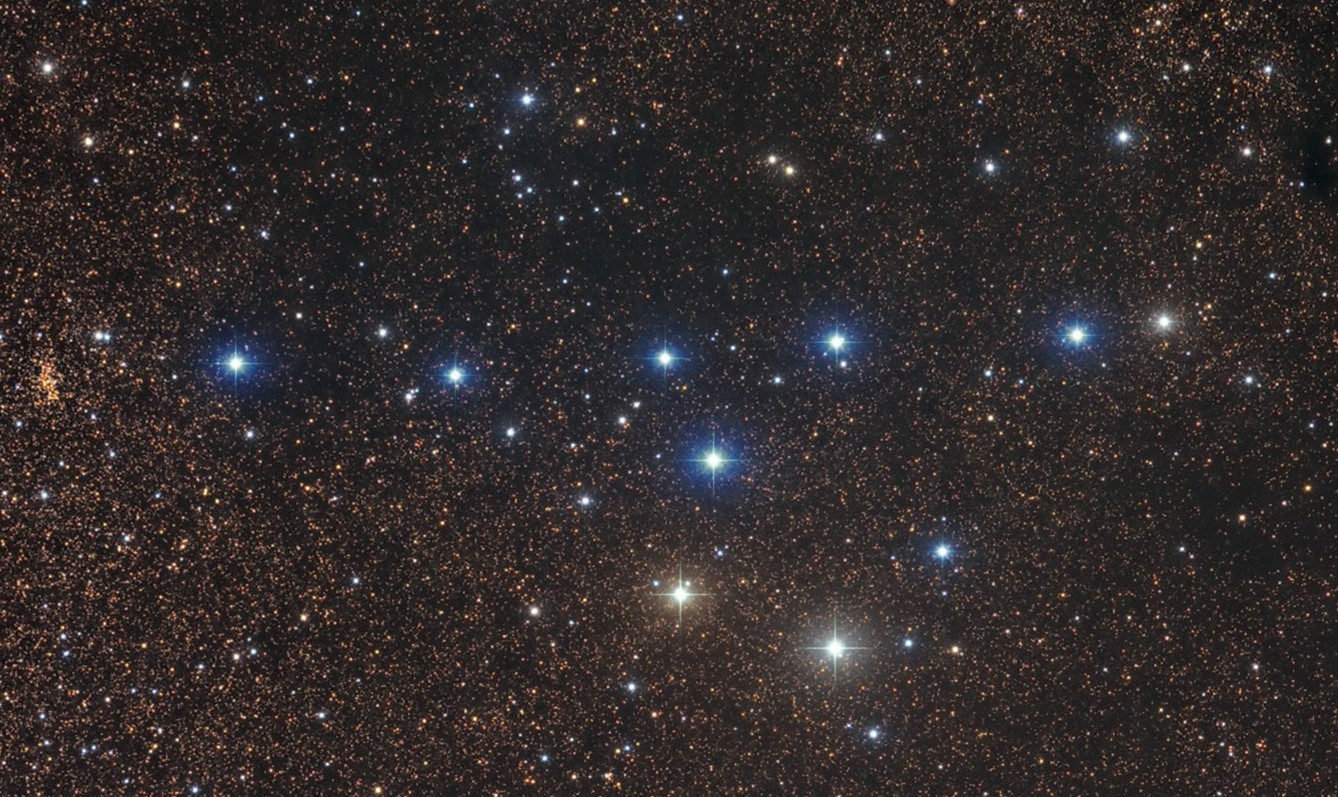
Asterisms are celestial phenomena that have captivated humanity for centuries. These clusterings of stars within a constellation have their own unique patterns and stories, often resembling familiar shapes or objects. From the celestial lion of Leo to the teapot of Sagittarius, these cosmic arrangements have sparked the imagination and curiosity of stargazers and astronomers alike.
In this article, we will delve into nine astounding facts about asterisms that will leave you in awe of the wonders of our universe. From their historical significance to their cultural interpretations, we will explore the fascinating world of these celestial formations. So, grab your telescope and join us on this celestial journey as we uncover the secrets of the enchanting asterisms above.
Key Takeaways:
- Asterisms are recognizable star patterns within constellations, like the Big Dipper. They have cultural significance and can be seen differently based on location and time of year.
- Amateur astronomers enjoy hunting for new asterisms and capturing their beauty in photographs. These star patterns have captivated people for centuries with their unique shapes and stories.
What is Asterism?
Asterism refers to a recognizable pattern of stars that form a distinct shape or symbol within a constellation. These patterns often resemble familiar objects or animals and can be easily identified in the night sky.
The Big Dipper
One of the most famous examples of an asterism is the Big Dipper, also known as the Plough. It is formed by seven bright stars in the constellation Ursa Major and is a prominent feature of the northern sky.
The Summer Triangle
The Summer Triangle is another well-known asterism composed of three bright stars: Deneb in the constellation Cygnus, Vega in the constellation Lyra, and Altair in the constellation Aquila. This triangle is visible during the summer months in the northern hemisphere.
Asterisms vs. Constellations
While asterisms are distinctive patterns within constellations, constellations themselves are larger, officially recognized areas of the celestial sphere. Many constellations contain multiple asterisms.
Cultural Significance
Asterisms have significant cultural significance in different societies throughout history. They have been used as navigation aids, storytelling elements, and mythological symbols across various cultures.
Personal Interpretations
Individuals may have their own interpretations of asterisms based on cultural, religious, or personal beliefs. Different cultures often ascribe different meanings and stories to the same set of stars.
Variability of Asterisms
Some asterisms may appear differently depending on the observer’s location and the time of year. Due to parallax, the apparent positions of stars may vary when viewed from different points on Earth.
Asterism Hunting
Asterism hunting is a popular activity among amateur astronomers. It involves searching for lesser-known or unrecognized star patterns within constellations and naming them based on personal observations.
Celestial Photographs
Photographers often capture stunning images of asterisms against the backdrop of the night sky. These photographs showcase the beauty and intricate details of these star patterns, allowing us to appreciate their splendor.
In conclusion, asterisms provide a unique way to navigate the night sky and connect with celestial objects on a personal level. Their significance can be found in mythology, cultural traditions, and even the joy of discovery for amateur astronomers. The 9 astounding facts about asterism mentioned above shed light on the captivating nature of these celestial phenomena.
Conclusion
In conclusion, asterism is a fascinating concept that adds an extra layer of wonder to our exploration of the universe. The nine astounding facts about asterism highlighted in this article shed light on the various aspects of these celestial phenomena. From the connection between asterisms and constellations to their historical significance in ancient cultures, there is much to learn and appreciate.Asterisms serve as navigation aids, helping astronomers and stargazers identify specific patterns in the sky. They also bring a touch of enchantment, as these patterns often resemble objects, animals, or mythical creatures. Whether it’s the famous Big Dipper or the lesser-known Summer Triangle, these asterisms captivate our imagination and inspire us to delve deeper into the mysteries of the cosmos.As we continue to unravel the secrets of the universe, asterisms will undoubtedly play a significant role in our exploration. Their beauty and significance remind us of the vastness and complexity of the cosmos we inhabit. So, the next time you gaze up at the night sky, take a moment to appreciate the awe-inspiring wonders of asterisms.
FAQs
Q: What is an asterism?
A: An asterism is a recognizable pattern of stars within a constellation that forms a specific shape or design.
Q: How are asterisms different from constellations?
A: While constellations encompass larger areas of the sky and are officially recognized by the International Astronomical Union, asterisms are smaller groups of stars within those constellations.
Q: Can anyone observe asterisms?
A: Yes, anyone with access to a clear night sky can observe asterisms. They are often visible to the naked eye without the need for specialized equipment.
Q: Are asterisms fixed or do they change over time?
A: Asterisms appear fixed from our perspective on Earth, but their relative positions may change over long periods due to the movement of stars in the galaxy.
Q: Are all asterisms easily recognizable?
A: While some asterisms like the Big Dipper and Orion’s Belt are well-known, there are many lesser-known ones that may require some familiarity with the night sky to identify.
Q: Are asterisms only found in Western culture?
A: No, asterisms have cultural significance in various civilizations around the world. Different cultures may interpret and name the same group of stars differently.
Q: Can you create your own asterism?
A: Yes, it’s possible to create your own personal asterism by connecting stars in a pattern that is meaningful or significant to you.
Q: Do asterisms have any scientific value?
A: While asterisms are primarily used for navigation and stargazing purposes, they also contribute to our understanding of star systems and the mapping of the night sky.
Q: How can I learn more about asterisms?
A: There are numerous resources available including books, online articles, and stargazing apps that can help you explore and learn about different asterisms.
Asterisms captivate stargazers, but have you ever wondered about the Stokes aster flower? This vibrant blossom shares more than just a name with celestial wonders. Aster flowers boast a rich history and cultural significance that will leave you astounded. From their symbolic meanings to their ecological importance, asters are truly mindblowing. Satisfy your curiosity and expand your knowledge by exploring the incredible facts surrounding Stokes asters, aster flowers, and the aster genus as a whole. Prepare to be amazed by the fascinating world of these stunning blooms!
Was this page helpful?
Our commitment to delivering trustworthy and engaging content is at the heart of what we do. Each fact on our site is contributed by real users like you, bringing a wealth of diverse insights and information. To ensure the highest standards of accuracy and reliability, our dedicated editors meticulously review each submission. This process guarantees that the facts we share are not only fascinating but also credible. Trust in our commitment to quality and authenticity as you explore and learn with us.


